For more than 40 years Voyager 1 and Voyager 2 have been travelling through our Solar System, unveiling the mysteries of the outer planets and discovering new moons. We’re still receiving data from the Voyager probes as they make their epic journey through interstellar space, but what will it teach us, and how long will they continue to communicate? Here are the key facts and figures covering everything you need to know about this historic mission:
Why was Voyager launched?
BeforeVoyager, our knowledge of the giants, Jupiter, Saturn, Uranus and Neptune was minimal, having only visited Jupiter twice and Saturn once by human probes. There were many uncertainties regarding the four planets, including their compositions, moons, magnetic fields and potential ring systems, which the Voyager probes would explore and discover, rewriting the textbooks in the process. A chance interaction between the planets also made such a mission all the more feasible.
Read more about the Voyager program:
- Voyager: a brief history of the interstellar spacecraft
- A message to ET: 47 images from the Voyager Golden Record
What was Voyager’s route?
An intern at the Jet Propulsion Laboratory (JPL), Gary Flandro, realised that the four outermost planets would be aligned during the late 1970s - “the chance of three lifetimes”. So a route for a single probe to complete ‘The Grand Tour’ was clear, using the gravity of one planet to move on the next in a gravity-assisted trajectory. However, this initial plan was seen as too expensive after planetary exploration funds were slashed, so the race was on to find a cheaper alternative, yet still take advantage of the rare planetary alignment.
A pair of identical probes was to be built to replace the earlier plan, and in a competition run by NASA, the new mission was named Voyager. Voyager 1 was set to closely flyby Jupiter and Saturn, while Voyager 2 would pass these planets from slightly further out, and follow its own trajectory to explore Uranus and Neptune.
What's on the Voyager probes?
The twin probes each weighed 722kg, full of scientific instruments, radio systems and their power sources. Solar energy was not an option given that Voyager 1 would be travelling 778 million km from the Sun, and Voyager 2 needed to be functional as far as 4.5 billion km fromthe Sun. The best alternative was nuclear power, in the form of Radioisotope Thermoelectric Generators (RTGs), containing plutonium-238 that would decay to produce heat, which was converted to electricity.
Each probe holds 11 instruments for analysis. These include examining atmospheric chemistry, magnetic fields, detecting aurorae, measuring charged particles, using radio signals to determine physical properties of the planets, and detecting solar wind through plasma measurements.
When were the Voyager probes launched?
On 20 August 1977 Voyager 2launched from Cape Canaveral, Florida, soon followed by Voyager 1 on 5 September. But the question on most peoples lips was ‘why was Voyager 2 launched before Voyager 1?’. This was due to the different trajectories of the two craft. Voyager 2 needed to travel much further to the two outermost planets so was launched first due to the preferable planetary conditions. Voyager 1 would be launched second, for its much shorter journey, but would still overtake Voyager 2 before reaching Jupiter.
What did the Voyager twins discover?
Jupiter
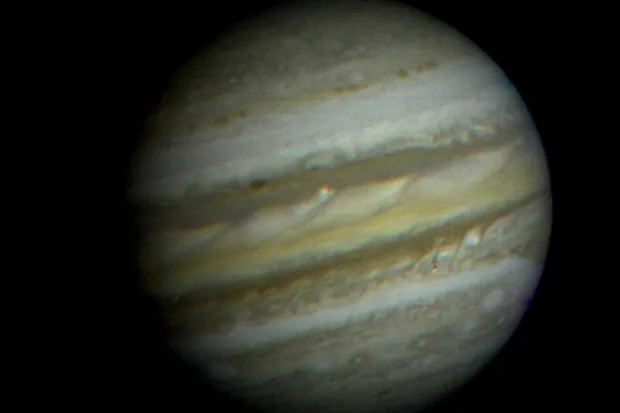
After a 15-month journey, Voyager 1 arrived atJupiter, soon followed by Voyager 2 a few months later. One of the first surprises was the discovery that its moon Io appeared to be geologically active, a trait known only to belong to Earth. At a third the size of our planet, Io’s volcanic activity yields twice as much energy, making it the most geologically active place in the Solar System.
Data from Voyager also revealed that Jupiter’s magnetosphere was much larger than previously thought, extending as far as the orbit of Saturn. Infrared measurements indicated the composition of Jupiter to be mostly hydrogen with some helium and trace amounts of water, methane, ammonia and rock. After Voyager 1’s closest approach, it captured another astonishing image. It depicted a narrow ring, closely surrounding the planet, something that had been thought impossible for Jupiter to sustain. Comprised of dark rocky grains, it prompted speculation that the ring was made from the debris of an ancient moon, with similar compositions to the newly discovered moons; Thebe, Metis and Adrastea. The heavily cratered moon Ganymede, the largest satellite in theSolar System, was found to have a very thin atmosphere.
Saturn
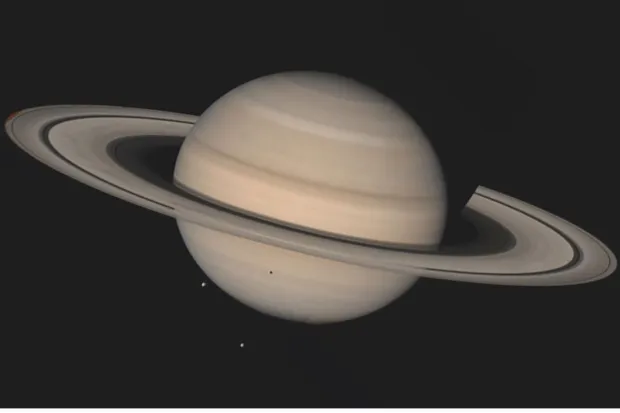
The discoveries made by the Voyager team on the approach toSaturnstarted with the flyby of its moon Titan. Known to have a thick atmosphere, it was uncovered to be much more substantial than predicted when Voyager 1 drifted beneath its orange clouds. Until then, Titan was thought to be the largest moon in the Solar System, but the diameter of the solid centre was found (through radio signals) to be smaller than Jupiter’s Ganymede. Titan also has an axial tilt, and Voyager 1 was able to witness distinct seasons as the gases migrated from each hemisphere.
Voyager was also tasked with photographing Saturn’s intricate ring system, revealing thin bands, spokes and gaps produced by ‘shepherd moons’ Prometheus and Pandora. Further discoveries into the moons influence in the ring structure unveiled a new moon, Pan, a tiny speck in an image captured by Voyager 2 of the Encke Gap. This flyby of Saturn marked the end of Voyager 1’s planetary expedition.
Uranus
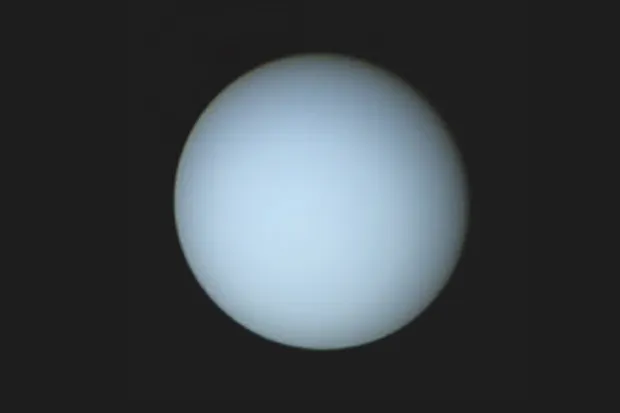
After Voyager 2’s five-year hibernation it finally reachedUranusin 1986, a mysterious new world. The probe captured images of the aquamarine coloured planet, confirmed the main constituents to be hydrogen and helium, recorded an uniform temperature of -216 degrees centigrade across Uranus’ atmosphere, and magnetometer data measured the ‘day’ to be 17.25 hours.
Voyager 2 also observed polar aurorae, in different positions to the planets rotational poles. Uranus’ aurorae produced powerful high-energy radiation, stripping any atmosphere from its moons, shown by the Voyager 2’s imaging of the dark, dusty natural satellites. Due to Voyagers trajectory, it was able to closely image the moon Miranda, whose craters and canyons inferred that it had been previously destroyed then reaggregated. Alongside these findings, 10 new moons were discovered, and only 2 moons were found to ‘shepherd’ Uranus’ rings, Ophelia and Cordelia.
Neptune
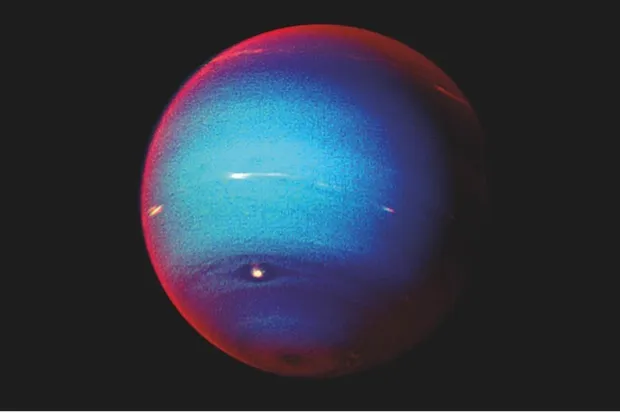
Three years later, in 1989, Voyager 2 reached its final planetary destination,Neptune. A sky-blue planet composed of primarily hydrogen and helium, but with notable abundances of ammonia, methane and hydrogen cyanide. The probe measured Neptune’s day at 16.1 hours, discover six new moons, and revealed an eagerly awaited ring system. The outermost ring had an inconsistent width, leading scientists to believe that the debris was from ancient moons, and the small moons Thalassa and Naiad would later contribute to the system.
To avoid the icy debris in the rings, the path of Voyager was altered so that it would still pass by Triton, the largest of Neptune’s moons. Nicknamed the ‘cantaloupe’ due to its scaly looking surface, Triton revealed its most surprising feature: erupting geysers. At 4.5 billion km from the Sun, active volcanism was unexpected, and became only the third known body in the Solar System to harbour this trait.
What happened once the Voyager probes completed their missions?
Voyager 1 completed its mission after passing Saturn, and continued its trajectory into the outer Solar System, overtaking Pioneer 10 to be the furthest human-made object from the Sun, in 1998. Before this, in 1990 the probe captured the iconic image of Earth, the Pale Blue Dot, as it looked back towards our Solar System.
The journey then fell quiet for Voyager 1 until 2002, when it started to detect energetic particles, inferring it had reached a boundary of the Solar System, known as Termination Shock. This boundary is the point at which the solar wind abruptly slows down, as it encounters interstellar winds, resulting in the particles bunching up, enough for the increase to be detected. The Voyager Interstellar Mission (VIM) team then took almost two years to confirm Voyager 1’s position, as the plasma detector (best suited for measuring solar winds) had previously stopped working during the Saturn flyby. Voyager 2 crossed this region three years later at a different point, so was able to confirm that our solar system is not round, but is in fact squashed.
Read more about Voyager 1 and 2 missions:
- Mind-blowing things we learned watching the new Voyager film The Farthest
- Mission timeline: Voyager’s landmark moments
By 2012, Voyager 1 had travelled to the outermost boundary between our system and interstellar space - the heliopause, where the solar winds are forced back around the Heliosphere, by the interstellar winds from the milky way and nearby supernovae. The iconic Voyager 1 is now humanity’s first interstellar traveller, collecting further information on the importance of the heliosphere, which protects our Solar System from 75 per cent of galactic cosmic rays, which have the ability to wreak havoc with our precious ozone layer and destroy DNA.
How much longer will Voyager last in Interstellar space?
From 2020, the scientific instruments aboard each craft will be turned off one by one to conserve the remaining power supplied via the decaying RTGs. The final instruments will be shut down by 2025, when only a periodic, faint electronic blip will be received, indicating the pairs positions beyond the Solar System for the following few years.
What can voyager reveal about interstellar space?
Initially presumed to be a vast empty expanse, analysis of the interstellar medium could help scientists understand dark matter, the birth of stars and the origins of life.
Dark matter, the elusive material that holds the Milky Way together, could be studied by the Voyager probes in the Interstellar medium. The current proposal is that dark matter in formed of Weakly Interacting Massive Particles (WIMPs), which cannot be analysed by the 40 year-old instruments on the probes. However, in theory they could detect the particles produced when two WIMPs collide, in a process known as annihilation.
Read more about space exploration:
- Space exploration: how might the next 50 years progress?
- 50 beautiful photos of the Moon landing missions from the Project Apollo Archives
Scientists also hope to use the pair to study the interstellar matter, and uncover more about the life cycle of stars and galaxies. The death of a star results in the emission of the heavy elements formed from nuclear fusion (the process which powers stars). These include carbon, oxygen and iron, the abundances of which can be measured over time. With fewer lighter elements, such as hydrogen and helium in the interstellar medium, the fewer stars are born, and fewer systems like ours will be formed.
The VIM team aim to use Voyagers remaining eight years to learn as much as possible about the outer Solar System. Key objectives of the mission include: understanding how the Sun’s magnetic field wraps around the heliosphere by measuring the changes in the density of particle detection, revealing new information about interstellar winds by listening to plasma oscillations caused by coronal mass ejections, and exposing the interactions between the solar atmosphere and interstellar winds. They are also eagerly awaiting data from Voyager 2, to confirm the boundary position of the heliopause with its fully functioning plasma detector.
What is the Golden Record?
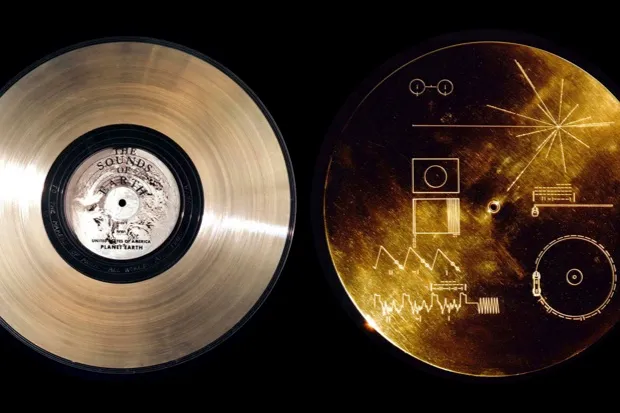
As the voyager twins continue on their travels through interstellar space, they are tasked with one final mission: greeting extraterrestrial civilisations.
Long after Earth has lost contact with the Voyager probes, the golden records attached to the outside of each craft have the potential to connect our world with any other intelligent life they may encounter.
In 1977, a time capsule in the form of a 12-inch disc was commissioned to adorn each of Voyager 1 and 2, containing a wealth of information to depict Earth and humanity. As well as inscriptions in the gold-plated copper disc on how to read it, there is also an ultra-pure sample of uranium-238 to determine the age of the probe once it reaches life (due to the rate of radioactive decay), alongside a map to locate our Sun with reference to 14 known pulsars. Thecontents of the Golden Record, including 116 analogue-encoded images, greetings in 55 languages, 12 minutes of natural sounds from Earth, and 90 minutes of music, was chosen by Carl Sagan and SETI’s Frank Drake after collaborating with historians, artists, folklorists and ethnomusicologists to create the best first impression of our home planet.
- This extract first appeared in issue 312 of BBC Focusmagazine -find out how tosubscribe
Follow Science Focus onTwitter,Facebook, Instagramand Flipboard
